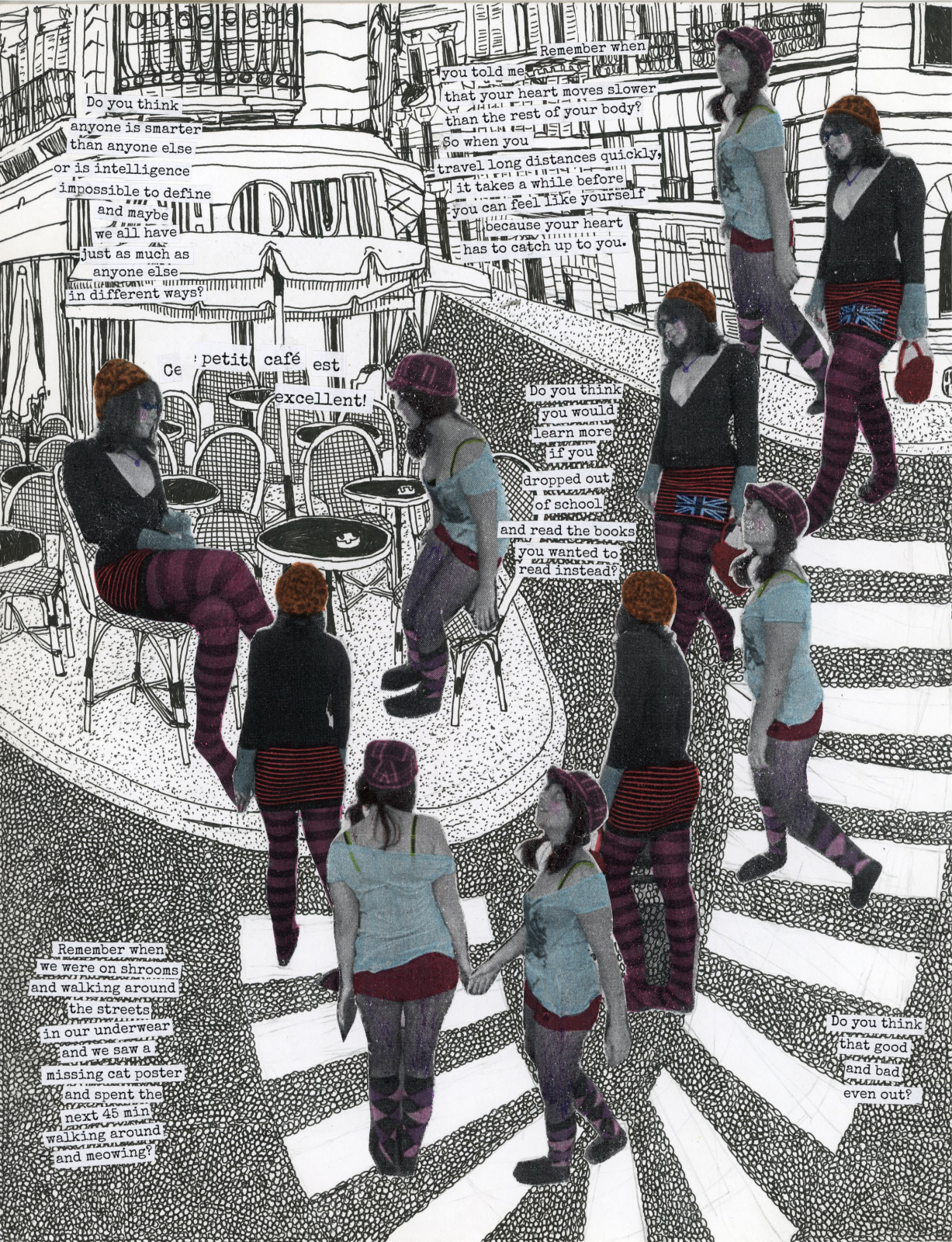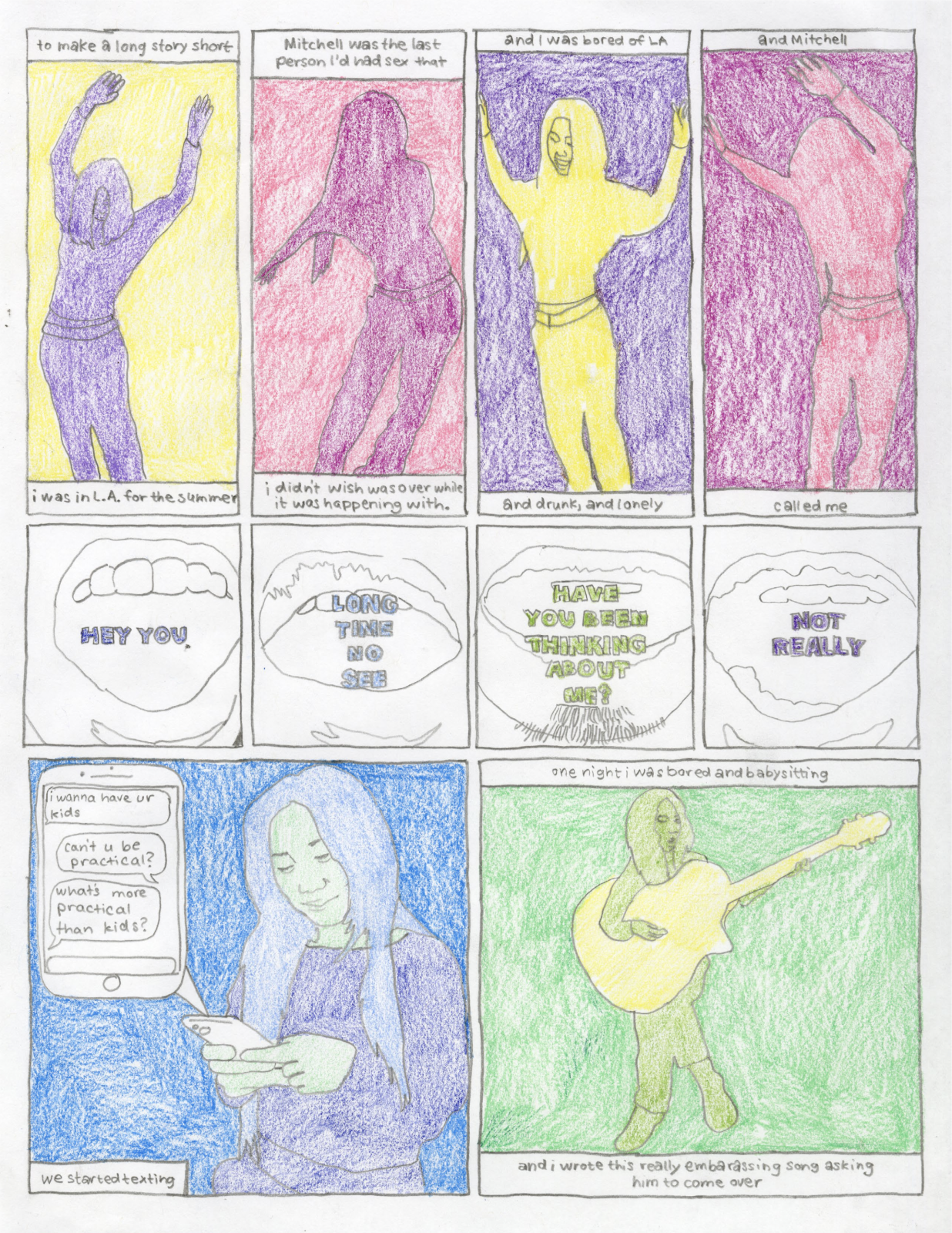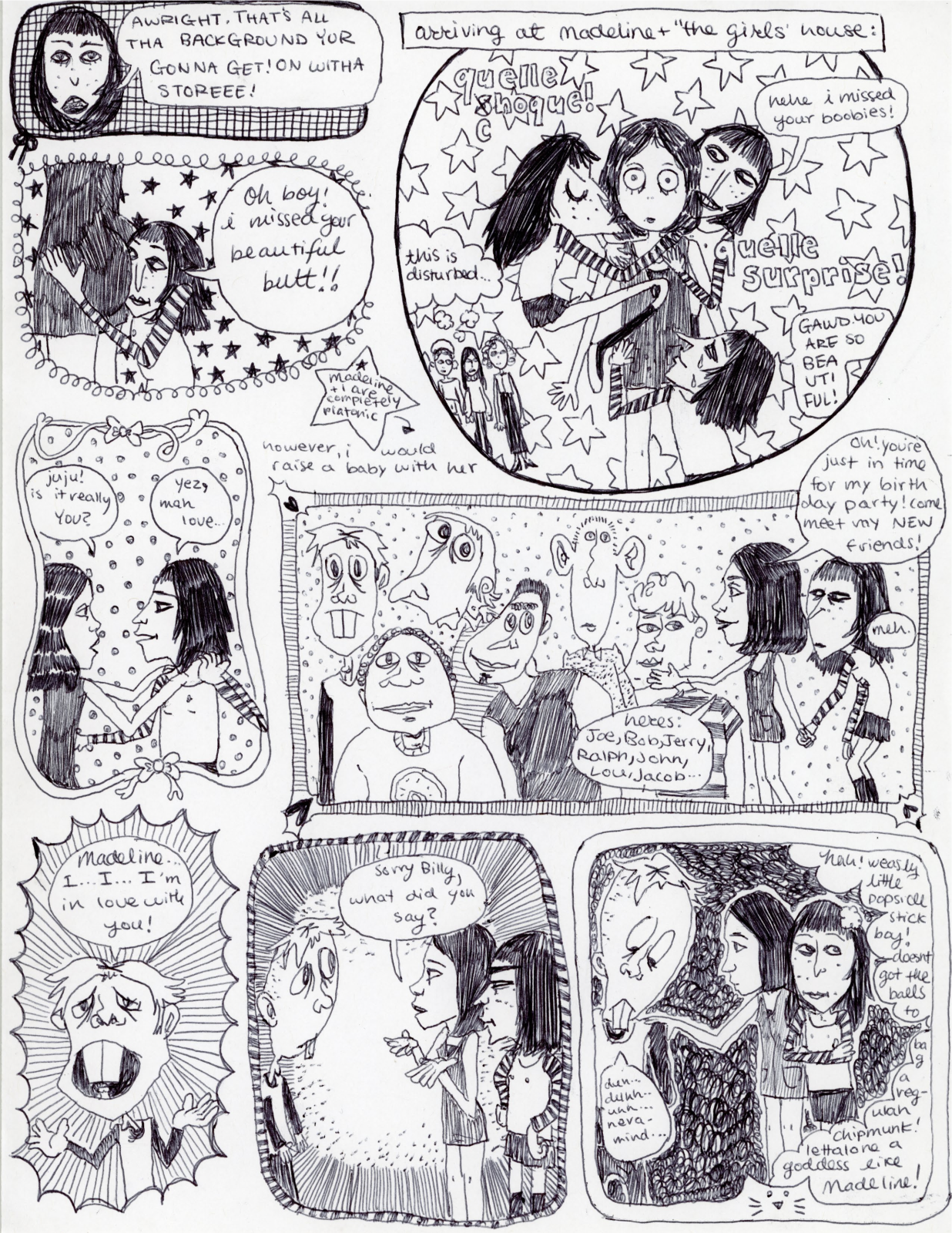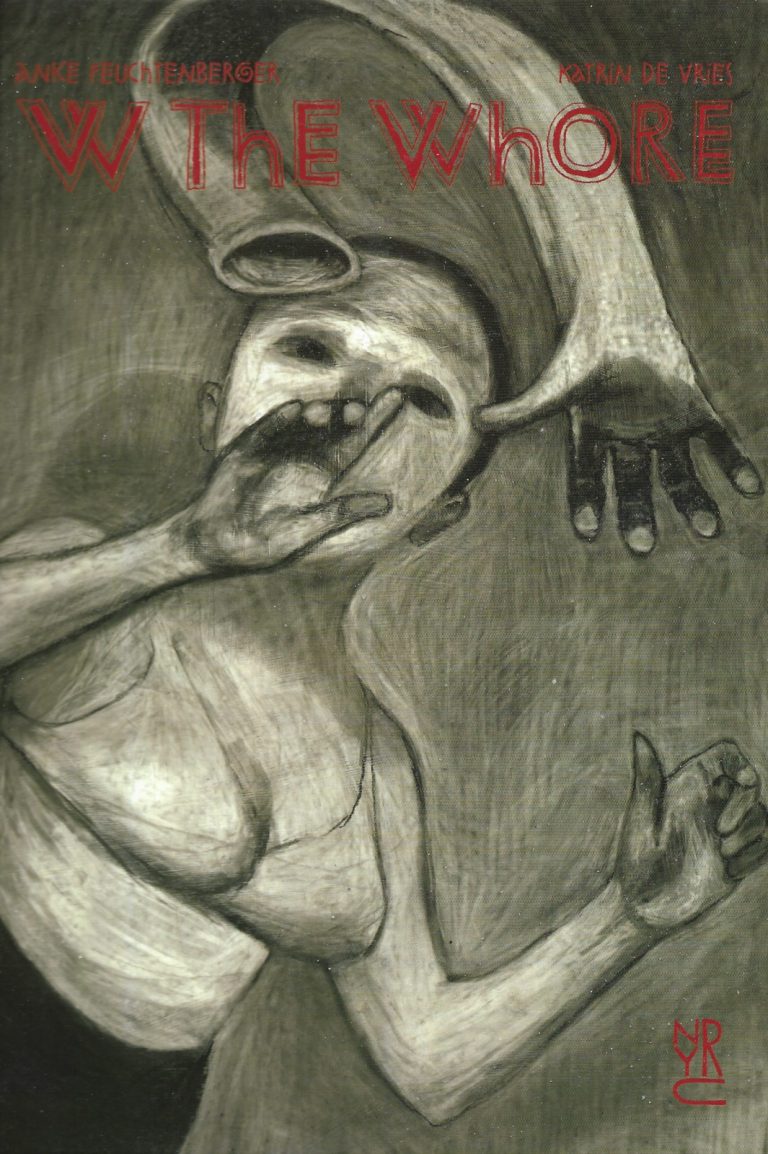What is old is new again. The working unit of an autobiographical comic, in the past 20 years, has been technologically conditioned to a sense of brevity and containment: a form more similar to the daily comic strip than an expression of multiple pages conveying an instance with loose boundaries. Moments of a day, rather than a specific event over the course of an evening, or even a lifetime; thoughts rather than experiences. John Porcellino, potentially the godfather of the now-style of autobio, vs. Aline Kominsky-Crumb. The now-style is largely mediated by time and clarity. It is rewarding insofar as it is routine. You see the comic on Instagram or in a seasonal diary release, you accustom yourself to the character on display, and you are given a deeper sense of your relationship to both it and them: to the art and the artist’s routine practice of recording their life. In the most cynical sense, this is attuned to social media metrics or quarterly zine subscriptions, but I don’t really hold that against anyone, nor should you. In no way does an ingrained set of practices among a milieu of artists make them any less sincere, or the work any less good. It’s just how the practice works, and how people make money.
The purpose of my risking charges of technological overdetermination just now is to say that Blah Blah Blah #3 by Juliette Collet is a remarkably different, and refreshingly older style of autobiographical comics. It features seven different “stories” or “sections”, each operating with a different and fashionably distinct style of comic storytelling used to communicate an overarching sense of whimsy or joie de vivre characteristic to Collet’s partiality to sex, light psychedelia, and general playfulness. Some of the comics are meant to be sung, like “Moth, Butterfly, and Racoon” and “Punkette”, and one of the pieces, a five-page sequence, is a wordless dance. It is–and I mean this in the most loving and nostalgic way possible–perfectly positioned as neo-twee. Suitably, the range of techniques in each piece is distinctly arts-and-crafts. Collet uses colored pencils, clipped-out photos, and typewriter text. There is an illusion at play that none of these drawings have ever even touched a computer - that the document was compiled physically. It is absolutely, structurally, and compositionally retrograde. It is a single-cartoonist anthology, and who can afford to make that work these days anyway?
And that’s refreshing, really. The best demonstration of what I’m talking about here is the longest piece in the collection, “Double Blindfold”, which positions Collet’s slightly roman-photo technique–soft colored pencils, photograph-referenced outline drawings of live actors, and graphite lettering–as a showcase of her general approach to depicting love, sex, and relationships with lightness and sincerity. She uses actors to portray herself and her lover “Mitchell” as they have a brief sexual encounter, reconnecting for an evening after previously ending their relationship. It isn’t a comic about having sex. It’s mostly about the events surrounding sex: getting shit on your shoes on the way to the car; not having a condom; drunk texting at a boring gig - the small inconveniences that texture one's experiences. It isn’t exactly emotionally rewarding - rather, Collet plays the encounter like a sweet sigh in a romantic vignette.
I saw Collet read this piece for an audience a week or so ago. The timing of her recitation was slow and measured, not particularly nervous or telling. The jokes felt like suggestions in the performance. Not “please laugh” but a disclosure of intention: “I wanted this to be funny.” Tonally, it’s a bit more downtempo than the rest of her work, which can embody a kind of manic sexual gratification more expressively seen in Blah Blah Blah #2, but I think it’s a descriptive piece that summarizes some of the emotions disclosed in the series-to-date. Generally her stories have the intention of sexual activity, but don’t seem altogether wrapped up in whether or not the sex is good. She’s not an erotic cartoonist, nor is ecstasy the emotion she’s actively seeking to communicate. To my mind it’s more about connection-to-experience: taking pleasure or disappointment as it comes. “Double Blindfold” is a nice story in the way nice things that happen to you can feel insignificant because there isn’t a deeply held truth being articulated. Maybe it’s just California Vibes.
To return to my earlier point, what I think is so delightful about Blah Blah Blah #3 is that the mediated relationship between technology, comic production, and the artist's sense of self on display is naturally archaic. I don’t know if Collet set out to make a comic that eschews the contemporary manner of autobio expression with a rejection of technological determinism. The characters in the comic use technology. There are panels of text messages and references to using technology presented unproblematically. It is not an interrogation of the infiltration of an always-social infrastructure in the basic movements of human life. These things are, instead, naturalized: afterthoughts, as real as a tree on the edge of perception. What this naturalization performs, in the context of both the way this comic is made and the way it talks about itself, is an openness to older forms of depicting the self in comics. I would be remiss if I didn’t say the name Julie Doucet; from the presence of typewriter-lettered collage to the very style of cartooning pursued in some of these stories, she’s obviously on Collet’s mind.
Despite the references to older styles of autobiography in comic art, I don’t think Collet is harkening a return to this mode of depiction in the form of an argument. It’s actually more simple than that. It’s a relationship. Among the first words you read in Blah Blah Blah #3 are: “Welcome to my world, I hope you enjoy it. I am a real person, feel free to contact me,” and among the last are “I hope I earned your time. Thank you, thank you, thank you.” There’s an honesty to that. An acknowledgement that anyone purchasing and consuming a slice of someone’s life in a 40-page pamphlet is a kind of social miracle. Maybe social media depression is out. Not that it’s unfashionable as a feeling, or something that shouldn’t be discussed, but maybe, formally, depression as a series of aimless musings on the subject of paranoid confinement isn’t the only diagnosis on individual life we can access and form relationships with. It might just feel like that because we traffic in technologically readymade examinations of those things. Blah Blah Blah #3 isn’t buying that presentation - not explicitly, but demonstrably. A beautiful reminder you can decide not to play, and in so doing, have some fun.










